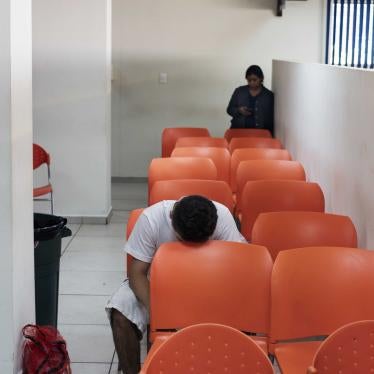For the first time since the Bush administration launched its global campaign against terrorism, the United States this week will answer internationally for its record on torture. On May 5 and May 8, the United Nation’s Committee Against Torture will question some 30 high-level officials from the Departments of State, Justice, Homeland Security, and Defense on U.S. compliance with the Convention against Torture and Other Cruel Inhuman or Degrading Treatment or Punishment. The U.S. officials will be speaking on the record about Washington’s human rights performance in the “war on terror,” and this session in Geneva may offer a more comprehensive accounting than usual of the Bush administration’s views on these issues.
What is the Convention against Torture and Other Cruel, Inhuman or Degrading Treatment or Punishment (the Convention against Torture)?
What is the Committee Against Torture?
How does the review process work?
What is notable about the committee’s questions this year?
What happens at the end of this review?
Is the United States alone in answering questions from the Committee?
What is the Convention against Torture and Other Cruel, Inhuman or Degrading Treatment or Punishment (the Convention against Torture)?
The Convention against Torture is a multinational treaty that prohibits at all times and under all circumstances the use of torture and cruel, inhuman, and degrading treatment. The convention defines torture as:
any act by which severe pain or suffering, whether physical or mental, is intentionally inflicted on a person for such purposes as obtaining from him or a third person information or a confession, punishing him for an act he or a third person has committed or is suspected of having committed, or intimidating or coercing him or a third person, or for any reason based on discrimination of any kind, when such pain or suffering is inflicted by or at the instigation of or with the consent or acquiescence of a public official or other person acting in an official capacity. It does not include pain or suffering arising only from, inherent in or incidental to lawful sanctions.
Among other things, the convention prohibits the practice of sending persons to states where they are likely to be tortured, and the use of evidence obtained through torture. It requires that states take measures to prevent the use of torture, hold torturers accountable, and provide effective remedies for claims of torture and abuse.
The United States ratified the Convention against Torture in 1994, 10 years after its unanimous adoption by the U.N. General Assembly. The convention has been ratified by 141 countries.
What is the Committee Against Torture?
The Committee Against Torture is the international body of experts responsible for monitoring compliance with the convention. It consists of 10 independent experts elected by states parties and meets in twice-yearly sessions to review the records of countries that have ratified the convention.
One year after a state becomes a party to the Convention against Torture, and every four years thereafter, it is required to submit a report to the committee on its compliance with the convention. The United States submitted its first report in 1999, four years overdue. The second report, originally due in 2000, and which the committee agreed to extend to 2001, was sent to the committee in 2005 and supplemented with an addendum in January of this year.
The committee also publishes its broader interpretations of the Convention against Torture and the prohibition against torture and other ill-treatment in “general comments” on thematic issues.
How does the review process work?
Upon receiving a country’s report, the committee sends the sending country a list of follow-up questions. This year, the committee sent the United States an unusually long list of 59 questions that cover a wide range of practices implemented by the United States as part of its “war against terrorism.” The committee is seeking answers about the U.S. role in “disappearing” persons (holding persons in unacknowledged or secret detention); the practice of rendition (sending persons to other countries without legal process); and the lack of accountability of the military chain of command for abuse of detainees in Iraq, Afghanistan, and at Guantanamo Bay, among other issues.
At briefing sessions on May 5 and May 8, the delegation of U.S.officials will formally respond to the committee'’s questions. Human Rights Watch will be attending the open hearing and monitoring the exchanges between the U.S. delegation and the committee members.
What is notable about the committee’s questions this year?
The last time the United States was before the committee, it was primarily questioned about its domestic practice, such as prison conditions and ill-treatment of criminal suspects by the police. This time, the committee has again questioned the U.S. about these important domestic issues, but has added to the agenda a panoply of questions about the use of torture and other coercive interrogation methods as part of the fight against terrorism and in armed conflict.
What happens at the end of this review?
After consideration of the U.S. responses, the committee will issue a list of concluding observations, listing positive aspects, subjects of concern, and recommendations. The committee expects to release its concluding observations on Friday, May 19.
Is the United States alone in answering questions from the Committee?
No. This session, the committee will also be considering reports from Peru, Georgia, Guatemala, Qatar, Togo, and South Korea. In the past, the Committee has expressed strong concerns to a range of other countries, including China, Egypt, Spain, Sweden and Uzbekistan, about many of the same practices it will be inquiring of the United States – such as abusive interrogation techniques, secret and indefinite detention, and rendition to torture.








